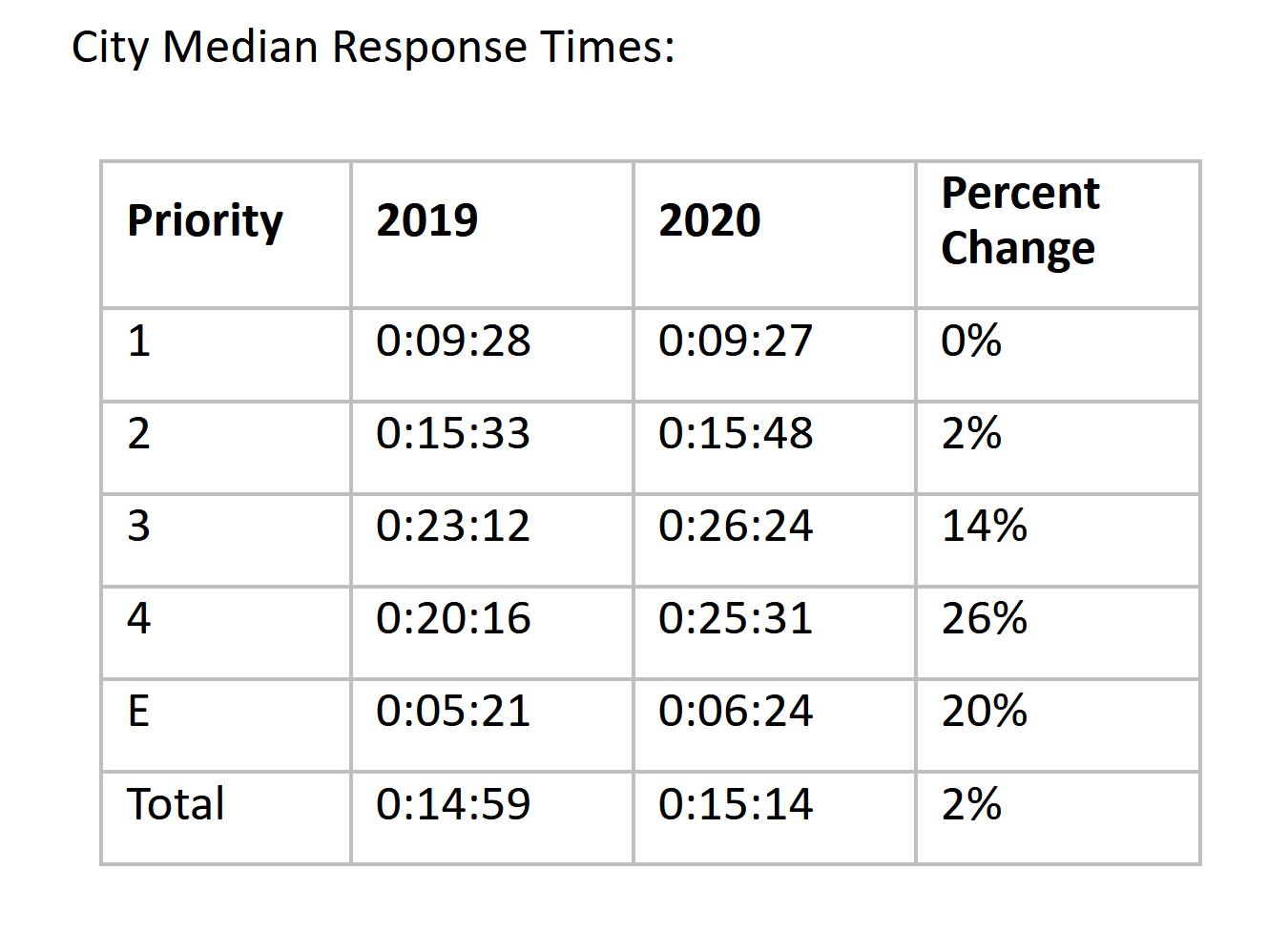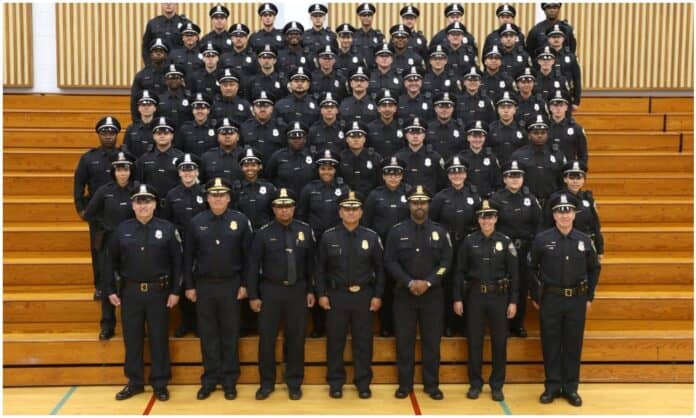Response times for most priority calls have jumped.
Milwaukee city leaders are systematically decimating the Milwaukee Police Department. We requested the number of sworn officers from MPD, and they show that the force has decreased by hundreds of officers – nearly 18% – since 1995 (and 4.5% from 2019 to 2020). The number of sworn officers is the lowest in at least 25 years.
That revelation comes as the City of Milwaukee Common Council rejected a $10 million grant that would have funded 30 additional police officers despite historically high homicide numbers, plunging clearance rates and longer response times as the strength of the force has been whittled away for years by city leaders. The Council is set to reconsider the grant on Jan. 19.
The fact that the number of sworn officers has already shrank considerably since the mid-1990s has been lost in the debate raging over “defunding” the Milwaukee Police Department. The department has already been defunded, through both purposeful cuts and attrition that’s not countered with enough new recruits. And it’s about to get much, much worse. Indeed, it’s plausible that, due to resignations and retirements – and no recruit classes – the department’s strength could be close to half the size it was in 1995 within three years.
There’s no recruit class planned at all for 2021, says Milwaukee Police Association President Dale Bormann, Jr. “There will be no classes in 2021,” he said. “And we will not have additional classes in the next few years.”
He said, “The refusal of the Common Council to hire officers and put them in the academy does not only hurt the police force. It hurts the citizens of Milwaukee. Not having these officers going through the academy will increase response time. Citizens will have to wait extra time before an officer responds to an assignment.” He said that retirements are increasing on top of it. “People aren’t sticking around anymore. They’re like forget this, I’m leaving.”
The city says 371 MPD officers will be eligible for retirement in the next three years. Bormann says about 180 officers will be eligible to retire by the end of 2021. The mayor continues to cut positions (120 through attrition in his next budget).
The city’s budget director told aldermen that the city’s force is projected to decline over the next three years already. “If the (COPS grant) award is not accepted, the budgeted sworn strength will fall by 30 officers to 1,652,” he said in a memo. A chart he gave aldermen shows the force strength could drop to 1,432 by 2023.
According to a letter to the community from Bormann Jr., the city expects to lose 450-600 officers through attrition over the next four years. “The 2021 proposed budget reduces police strength by 120 officers, or -6.7%. It is also a reduction of -10.9% from 2017 strength levels,” says the budget director’s letter to aldermen.
All of this doesn’t consider the fact that there are even fewer officers on the streets than the numbers show because of COVID-19 absences.
In 1995, the force had 2,130 sworn officers; in 2020, it had 1,750 a month ago, a number already depleted further by additional retirements and vacancies. Although defunding police advocates often point to the cost of city pensions and benefits and blame loss of shared revenue from the state and Gov. Walker’s decision not to include police unions in Act 10, budgets are ultimately about choices, and fewer officers on the street has been the practical result, whoever is assigned blame. The declining number of officers also sets up a scenario where the department needs to use overtime because of short staffing at a cost to taxpayers (it was budgeted for more than $17 million in overtime in 2020).
The bottom line is there are fewer boots on the ground already at a time that defunding the police advocates and some city officials want there to be even fewer of them.
Numbers from the Milwaukee Police Association, which represents rank-and-file officers, paint an even bleaker current picture – they say when vacancies are considered and supervisors from sergeant and above are removed from the totals (because they don’t all regularly hit the streets), the actual number of officers on the streets in 2020 was about 1,517, not the 1,750 provided by MPD.
Let’s take a look at what’s happened to the force over the years. We obtained these numbers from the Milwaukee Police Department; they represent sworn officers only (not civilian employees).
NUMBER OF SWORN OFFICERS
1995 – 2,130
1996 – 2,176
1997 – 2,150
1998 – 2,094
1999 – 2,051
2000 – 1,984
2001 – 1,961
2002 – 1,975
2003 – 1,948
2004 – 2,008
2005 – 1,962
2006 – 1,986
2007 – 2,041
2008 – 1,994
2009 – 1,940
2010 – 1,924
2011 – 1,887
2012 – 1,890
2013 – 1,841
2014 – 1,915
2015 – 1,916
2016 – 1,923
2017 – 1,853
2018 – 1,917
2019 – 1,832
2020 – 1,750
What will that mean for the City of Milwaukee’s residents? Lower clearance rates and higher response times are already occurring, especially with some detective positions unfilled; furthermore, studies have found that more police reduces violent crime.
The clearance rate in the City of Milwaukee has dropped substantially in 2020. We obtained these numbers from MPD:
2015 – 147 homicides, 85 homicides cleared (58%)
2016 – 142 homicides, 95 homicides cleared (67%)
2017 – 119 homicides, 93 homicides cleared (78%)
2018 – 99 homicides, 75 homicides cleared (76%)
2019 – 97 homicides, 75 homicides cleared (77%)
2020 – 190 homicides, 104 homicides cleared (55%)
In addition, response times for almost all calls have jumped from 2019 to 2020:

The city of Milwaukee’s crime heyday was previously in the early 1990s. The city passed the historic record for the most homicides in the history of Milwaukee on Nov. 5, 2020. In the 1990s, there was a general recognition that policing could mitigate crime; now the rhetoric at City Hall is virulently anti-police. To be sure, many things affect crime rates, but force strength is a factor too little discussed in Milwaukee as people worry about response times and homicide numbers.
The city has systematically reduced the MPD’s number of sworn officers through 1-3% decreases most years since 1995 but the trends have escalated recently, with 4% declines in three of the last four years.
In 2020, according to MPD numbers provided to WRN, the MPD is down 380 officers.
How big of a deal is that? Before former Chief Alfonso Morales was demoted (a demotion reversed by a judge), MPD tweeted, “Losing 375 officers is the equivalent of shutting down District 5, District 7 and Sensitive Crimes. #DidYouKnow.” That tweet wasn’t in reaction to the historical declines but rather a new proposal by aldermen to cut the force further. Soon, Morales was gone in a process a judge said was so flawed he wasn’t even allowed to talk or learn the accusations against him. The city has had two acting chiefs since that time, and a deadlocked process to pick a permanent chief.
We asked the MPA and MPD for the numbers because we remembered the era when the force size was much larger.
Here are the numbers from the Milwaukee Police Association. They only count officers in the MPA, so they don’t count the command staff, sergeants and above, who are in the supervisors’ union. In the chart, authorized numbers mean the number of sworn officers allowed by the city. Actual numbers mean the actual number of rank-and-file officers below sergeant.

In addition, the 173 vacancies in the MPA tally sheet are the highest number since at least 2010. In addition, the 1,517 figure was as of November 2020; according to Bormann, Jr., a number of people have retired and left since then, plunging the number of sworn officers below sergeant level into the 1400s. There are also shortages due to COVID-19 leaves.
It’s a National Trend
How does this fit into a national context? A 2018 Princeton University study analyzed the effects of COPS grants to answer the question of whether more cops correlates with fewer crimes. They found it does. The effect was most pronounced on robbery, larceny, and auto theft, “with suggestive evidence that police reduce murders as well.” The author found that “consistent with the existing literature, I find that violent crime is more responsive than property crime to increases in police force size.” In its literature review, the study found, “Quasi-experimental studies typically document that police reduce crime, although estimated magnitudes vary widely.” Here’s another study on COPS grants finding similarly.
Other studies have found evidence more police reduce crime, although the research on the question is conflicting and not settled. Methodologies have been questioned, and the reasons for crime increases are complicated and tough to tease out. Studies have found that proactive policing can reduce crime, and a short-staffed police department going from priority to priority call can’t as effectively do proactive policing. Obviously, things like policing strategies also matter and the socio-economic health of the community.
A 2016 report from the Bureau of Justice Statistics found that the overall number of full-time officers in the United States increased from 1992 to 2008. That trend has reversed.
A 2019 study by the International Association of Chiefs of Police pointed out that the “raw number of law enforcement jobs” in the U.S. doesn’t tell the full story: “According to the U.S. Bureau of Labor Statistics…a more considerable growth in U.S. population has actually led to a slow decline in the ratio of residents to police officers.” Seventy-eight percent of agencies surveyed by the IACP reported having trouble recruiting qualified candidates.
A 2019 Police Executive Research Forum report found that, “most law enforcement agencies are sensing a crisis in their ability to recruit new officers, and to hold on to the ones they have…Fewer people are applying to become police officers, and more people are leaving the profession, often after only a few years on the job.”
According to PERF, “the number of full-time employees in law enforcement is declining. Between 2013 and 2016, the number of full-time sworn officers dropped 3.2 percent, from approximately 725,000 officers to 701,000, ending a period of steady increases from 1997 to 2013.”
Table of Contents







![Protecting Portland: No Good Deed Goes Unpunished [REVIEW]](https://www.wisconsinrightnow.com/wp-content/uploads/2025/07/portland-356x220.jpg)























